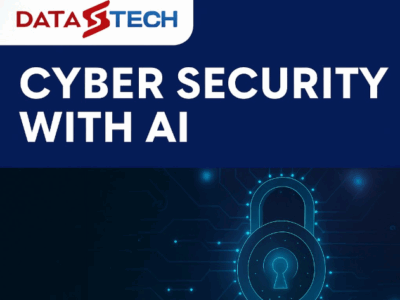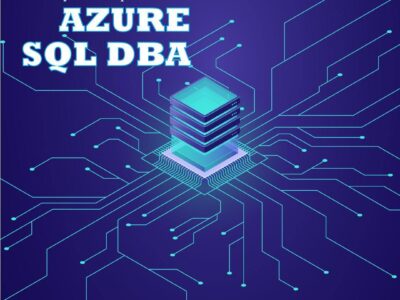Cyber Security Course Content
Cybersecurity Fundamentals:
- Basic terminology and concepts in cybersecurity
- Key principles of information security: confidentiality, integrity, availability (CIA triad)
- Overview of cybersecurity frameworks and standards (e.g., NIST, ISO/IEC 27001)
Threat Actors and Attack Vectors:
- Types of threat actors: hackers, insiders, nation-states, etc.
- Common cyber-attack vectors: phishing, malware, ransomware, DDoS attacks, etc.
- Real-world examples and case studies of cyber-attacks.
Risk Management:
- Introduction to risk management in cybersecurity.
- Risk assessment methodologies: qualitative vs. quantitative risk analysis.
- Risk mitigation strategies and risk treatment plans.
Legal and Ethical Aspects:
- Cybersecurity laws, regulations, and compliance requirements.
- Ethical considerations in cybersecurity: professional ethics, privacy, and data protection.
- Legal consequences of cybercrime and ethical hacking.
Cybersecurity Best Practices:
- Implementing security policies, procedures, and controls.
- Security awareness and training for employees.
- Incident response planning and cybersecurity incident handling.
Emerging Trends and Technologies:
- Overview of emerging cybersecurity technologies (e.g., AI/ML in cybersecurity, blockchain security).
- Future trends in cybersecurity: IoT security, cloud security, quantum-safe cryptography.
- Continuous learning and staying updated in the cybersecurity field.
Networking Fundamentals:
- Introduction to computer networks
- OSI and TCP/IP models
- Network components: routers, switches, firewalls, etc.
- Network topologies and architectures
Network Protocols and Standards:
- TCP/IP suite protocols: TCP, UDP, IP, ICMP, etc.
- Ethernet standards and protocols
- Wireless networking standards: Wi-Fi (802.11), Bluetooth, NFC
- Internet protocols: HTTP, HTTPS, DNS, DHCP, FTP, SNMP, etc.
Network Configuration and Management:
- IP addressing and subnetting
- Configuring routers and switches
- Network services and protocols configuration
- Network management tools and utilities
Network Security:
- Common network security threats
- Securing network devices: routers, switches, firewalls
- Access control methods: ACLs, authentication, encryption
- Network security best practices
Network Troubleshooting:
- Network troubleshooting methodologies
- Using network diagnostic tools: ping, traceroute, nslookup, etc.
- Identifying and resolving common network issues
- Troubleshooting connectivity problems, performance issues, and network errors
Virtualization and Cloud Networking:
- Introduction to virtualization technologies
- Virtual network components: virtual switches, VM networking
- Cloud computing fundamentals
- Cloud networking concepts and service
Emerging Technologies in Networking:
- Software-defined networking (SDN) principles
- Network Function Virtualization (NFV)
- Internet of Things (IoT) networking considerations
- Future trends in networking: 5G, edge computing, network automation
Security Fundamentals:
- Introduction to cybersecurity principles
- Understanding the CIA triad: confidentiality, integrity, availability
- Threats, vulnerabilities, and risks in cybersecurity
Cryptography and PKI:
- Basics of encryption and decryption
- Symmetric and asymmetric encryption algorithms
- Public Key Infrastructure (PKI) components and usage
Network Security:
- Network devices and technologies
- Secure network design and architecture
- Network protocols and their security implications
Threats, Attacks, and Vulnerabilities:
- Common cybersecurity threats: malware, phishing, social engineering
- Types of attacks: DoS, DDoS, man-in-the-middle, etc.
- Vulnerability assessment and management
Identity and Access Management (IAM):
- IAM principles and practices
- User authentication methods: passwords, biometrics, tokens
- Role-based access control (RBAC) and permissions
Security Technologies and Tools:
- Firewalls, IDS/IPS, and other security appliances
- Antivirus software and endpoint security
- Security monitoring and logging tools
Secure Software Development:
- Secure coding practices
- Software development lifecycle (SDLC) security considerations
- Application security testing techniques
Incident Response and Disaster Recovery:
- Incident response planning and procedures
- Business continuity and disaster recovery planning
- Post-incident analysis and improvement
Compliance and Legal Considerations:
- Regulatory compliance requirements (e.g., GDPR, HIPAA)
- Security policies, procedures, and standards
- Ethical and legal aspects of cybersecurity
Introduction to Ethical Hacking:
- Understanding ethical hacking concepts and principles
- Differentiating between ethical hacking and malicious hacking
- Legal and ethical considerations in ethical hacking
Footprinting and Reconnaissance:
- Gathering information about target systems and networks
- Techniques for footprinting: passive and active reconnaissance
- Tools used for footprinting and information gathering
Scanning Networks:
- Network scanning methodologies: port scanning, network mapping
- Vulnerability scanning techniques and tools
- Scanning for open ports, services, and vulnerabilities
Enumeration and System Hacking:
- Enumerating network resources and user accounts
- Techniques for gaining access to systems and networks
- Exploiting vulnerabilities and privilege escalation
Malware Threats:
- Understanding malware types: viruses, worms, Trojans, ransomware
- Analyzing malware behavior and characteristics
- Malware detection and removal techniques
Sniffing and Social Engineering:
- Packet sniffing techniques and tools
- Social engineering attacks: phishing, pretexting, baiting
- Mitigating sniffing and social engineering attacks
Denial-of-Service (DoS) Attacks:
- DoS attack principles and techniques
- Distributed Denial-of-Service (DDoS) attacks
- DoS attack detection and prevention
Web Application Security:
- Common web application vulnerabilities: SQL injection, XSS, CSRF
- Web application scanning and testing methodologies
- Secure coding practices and web application firewall (WAF) usage
Wireless Network Security:
- Wireless network vulnerabilities and attacks
- Wireless network scanning and penetration testing
- Securing wireless networks: encryption, authentication
Cryptography and Steganography:
- Cryptographic algorithms and protocols
- Steganography principles and techniques
- Detecting and analyzing hidden information
Penetration Testing:
- Penetration testing methodologies: black box, white box, gray box
- Penetration testing tools and frameworks
- Reporting and remediation of vulnerabilities
Course Features
- Lectures 44
- Quiz 0
- Duration 30 weeks
- Skill level All levels
- Language English
- Students 8
- Assessments Yes
- 6 Sections
- 44 Lessons
- 30 Weeks
- Class Record Cyber Security26
- 1.1Class Record_Cyber Security 10_06_2024
- 1.2Class Record_Cyber Security 10_10_2024
- 1.3Class Record_Cyber Security 10_13_2024
- 1.4Class Record_Cyber Security 10_17_2024
- 1.5Class Record_Cyber Security 10_20_2024
- 1.6Class Record_Cyber Security 10_27_2024
- 1.7Class Record_Cyber Security 11_03_2024
- 1.8Class Record_Cyber Security 11_07_2024
- 1.9Class Record_Cyber Security 11_10_2024
- 1.10Class Record_Cyber Security 11_17_2024
- 1.11Class Record_Cyber Security 11_24_2024
- 1.12Class Record_Cyber Security 12_08_2024
- 1.13Class Record_Cyber Security 12_15_2024
- 1.14Class Record_Cyber Security 12_22_2024
- 1.15Class Record_Cyber Security 12_12_2024
- 1.16Class Record_Cyber Security 01_19_2025
- 1.17Class Record_Cyber Security 01_26_2025
- 1.18Class Record_Cyber Security 02_02_2025
- 1.19Class Record_Cyber Security 02_09_2025
- 1.20Class Record_Cyber Security 03_02_2025
- 1.21Class Record_Cyber Security 03_09_2025
- 1.22Class Record_Cyber Security 03_16_2025
- 1.23Class Record_Cyber Security database security
- 1.24Class Record_Cyber Security database security TDE DDM Orphanuser
- 1.25Class Record_Lab Cyber Security 06_15_2025
- 1.26Class Record_Lab Cyber Security 06_22_2025
- 0
- Module: 1 Introduction to Cybersecurity7
- Module 2: Network Plus+8
- Module 3: Security Plus+3
- Module 4: CEH (v12) - Certified Ethical Hacker0






